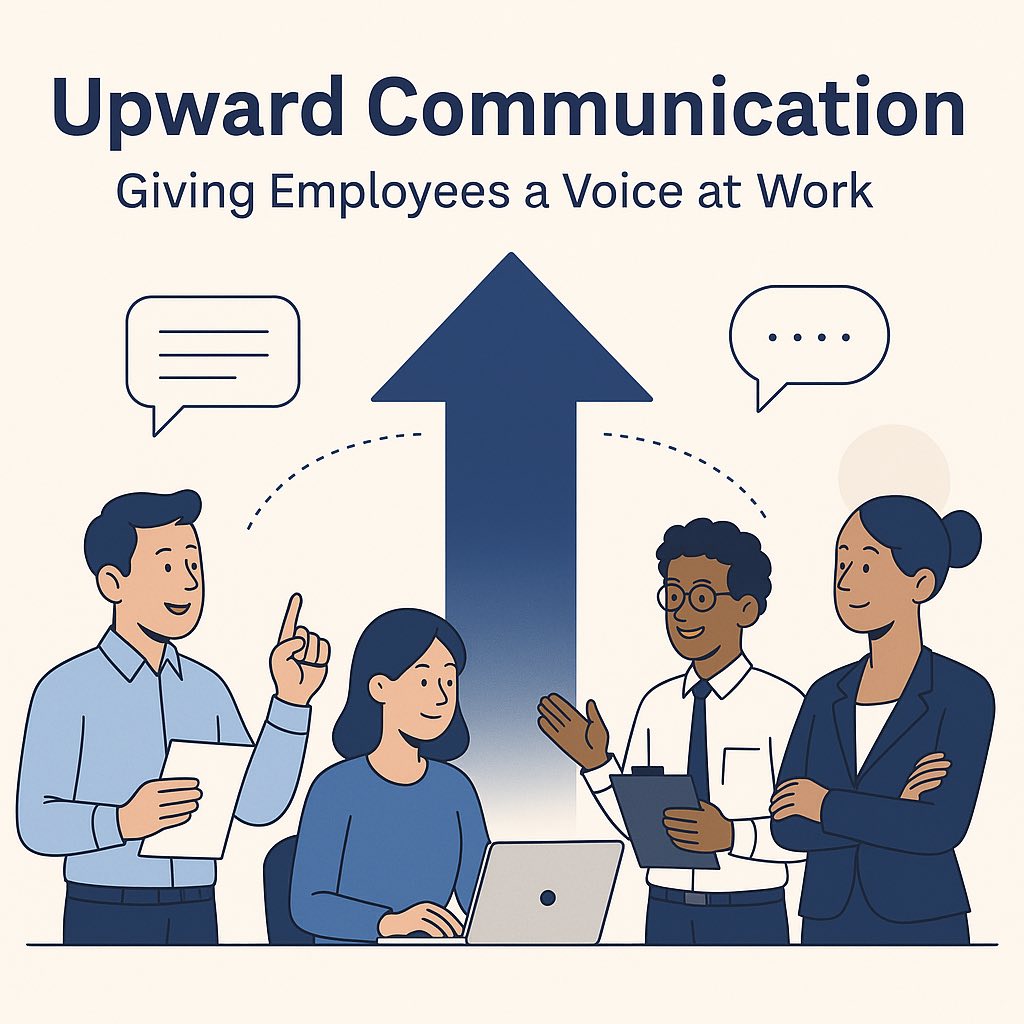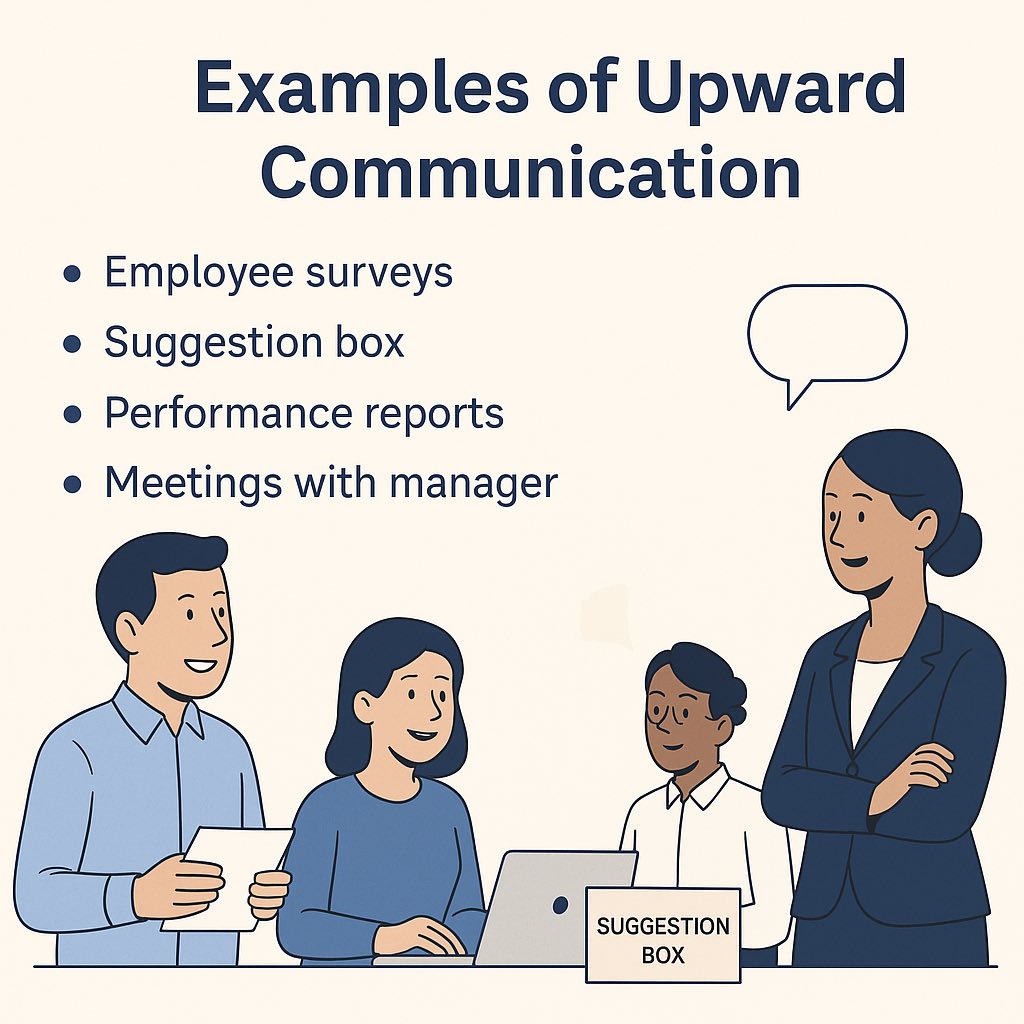Most workplaces really enjoy chatting about communication. Yet, in many cases, it only flows one way. Leaders give instructions, managers set deadlines, and employees follow. But what about the voices at the bottom of the ladder? Should they remain silent? Of course not.
This is where upward communication comes in. It is the flow of information from employees to managers. When done well, it becomes the backbone of a healthy, open, and trust-based culture. Above all, it makes sure leadership hears the people closest to the action.
This article will explain upward communication, its importance, and how to implement it effectively.
What is Upward Communication?
Upward communication is the process of sharing feedback, concerns, and ideas from employees to their supervisors or leaders. In simpler words, it gives workers a voice in shaping decisions.

Unlike downward communication, which comes from management to employees, upward communication goes in the opposite direction. There is also horizontal communication between peers and diagonal communication across departments. Among these, upward communication is the one that truly empowers employees.
Why? Because it changes the narrative. Instead of only following orders, employees can influence decisions, raise issues, and suggest improvements. In a modern workplace, this shift is not only useful, it is necessary.
Examples and Channels of Upward Communication
There are many ways upward communication happens. Some are formal and structured, while others are casual and spontaneous. Here are a few examples:
- Surveys and Feedback Forms: Quick surveys allow employees to share opinions anonymously. They often provide honest insights that leaders might not hear otherwise.
- One-on-One Meetings: Personal conversations with managers give employees a safe space to discuss challenges and share suggestions.
- Team or Company-wide Meetings with Q&A: Open forums let workers raise questions directly with leadership.
- Focus Groups or Employee Forums: Small group discussions are excellent for gathering detailed feedback.
- Suggestion Boxes (physical or digital): Sometimes, people feel more comfortable writing than speaking. Suggestion boxes give them that option.
- Performance Reviews: While these focus on the employee, they also provide opportunities for employees to give feedback about processes and leadership.
- Anonymous Channels (online tools, Slack forms, apps): These platforms help capture unfiltered thoughts without fear of judgment.
These channels prove that upward communication does not have to be complicated. It simply needs to exist and remain accessible.
Benefits of Upward Communication
Now let us look at why upward communication is worth all the effort.
- Builds Trust: When employees see that their voices matter, trust grows naturally.
- Creates an Inclusive Culture: Everyone feels they belong, not just a select few at the top.
- Improves Processes: Employees are often the first to notice inefficiencies. Sharing this feedback saves time and money.
- Encourages Innovation: Many great ideas come from people who work directly with customers or tools.
- Increases Motivation and Retention: Workers stay longer in organizations that value their input.
- Develops Skills: Regular feedback opportunities help employees practice communication and critical thinking.
- Strengthens Purpose: Employees who feel heard are more likely to connect with the mission of the company.
Think of it this way. Without upward communication, a company risks becoming an echo chamber. Leaders only hear their own voices. With it, the organization becomes more like a choir where every voice counts.
Barriers and Challenges
Of course, upward communication is not always smooth. Many obstacles stand in the way.
- Fear of Retaliation: Employees may worry that speaking up will harm their careers.
- Authoritarian Leadership: Some managers believe communication should only move downward.
- Lack of Proper Channels: Without tools or structures, employees have no way to share feedback.
- Dismissed Input: If leaders ask for feedback but never act on it, employees stop bothering.
- Information Overload: Too many channels without focus can cause confusion.
These challenges are real. Nevertheless, they can be overcome with the right strategies, which brings us to the next section.
How to Implement Effective Upward Communication
So, how can organizations make upward communication a success? Here are practical steps:
- Create a Safe Environment: Employees must feel comfortable expressing concerns without fear of negative consequences.
- Establish Clear Channels: Provide multiple ways for employees to share ideas, whether through surveys, meetings, or digital platforms.
- Listen Actively: Managers should pay attention, ask questions, and show genuine interest in employee feedback.
- Take Action: Nothing kills upward communication faster than silence. Leaders should act on feedback and communicate what changes are being made.
- Encourage Transparency: Leaders who share challenges and decisions openly make employees more likely to speak up.
- Be Consistent: Upward communication should not be a one-time event. Make it part of the culture.
- Recognize Contributions: Praise or reward employees when their feedback leads to improvement.
- Promote Employee-Generated Content: Let employees share best practices, create templates, or lead sessions.
These steps are simple, yet powerful. Instead of building a wall between managers and employees, they build a bridge.
Case Studies and Real-World Examples
The best way to understand upward communication is through stories.
One company introduced an anonymous feedback tool for its marketing team. Within three months, employees suggested process changes that reduced campaign delays by 25 percent. The leadership team realized that the workers closest to the projects often had the most valuable insights.

Another example comes from a Gallup survey. It revealed that a significant number of employees who quit said they might have stayed if their managers had listened better. The data speaks clearly. When upward communication is ignored, talent walks out the door.
Final Verdict
Upward communication is more than just feedback. It is about creating a culture where everyone has a voice. It builds trust, sparks innovation, and strengthens the bond between leaders and employees.
For managers, the takeaway is simple. Start today. Open at least one channel where employees can share ideas. Listen, act, and repeat. For employees, do not hold back. Your input might be the spark that transforms your workplace.
Remember, communication is not complete until it flows both ways. When upward communication thrives, organizations do not just function, they flourish.



1 Comment
Big Job!